I was aware after giving birth that my body didn’t quite feel right. It wasn’t just the curve to my shoulders or back (which I assumed would straighten out with time and exercise), but the podge in my belly which just felt like – well, jelly!
What is abdominal separation? Liz from Team Happity shares her experience of abdominal separation and her journey to recovery.
What Is Abdominal Separation?
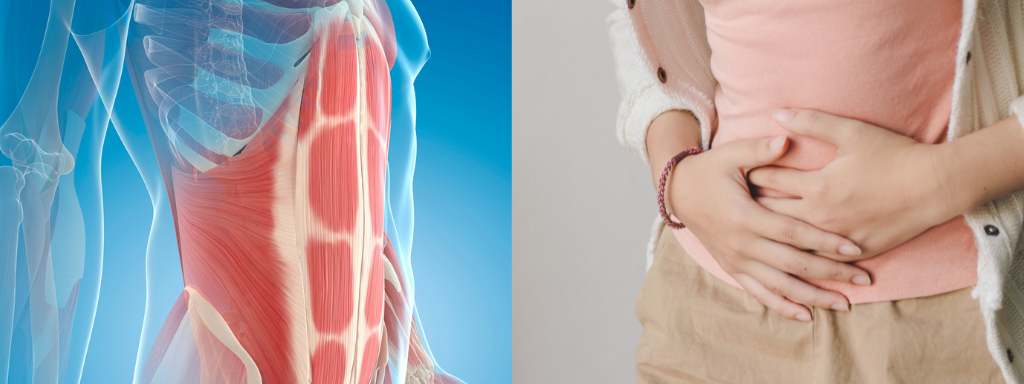
It’s where the muscles in your stomach pull apart either during or after pregnancy. Its official name is diastasis recti, and you can check out more information about it here.
Leg slides, knee drops and spine curls are all activities you can safely do at home. Or you can speak to a healthcare professional, physio or postnatal Pilates specialist for exercises tailored to you and your body.
My First Experience With Abdominal Separation

Before my first pregnancy, my knowledge of abdominal separation was absolutely zilch, zero. Even now I have met relatively few mums who have been officially told they have abdominal separation – even though they suspect they may have it after looking at their stomachs and us comparing symptoms.
It was only on an NCT course that I remember being told ‘doctors will check for abdominal separation during your 6-week check-up’. That seemed to be a quick feel of the stomach and being told all was fine. I did get a referral for NHS physio sessions for back pain. These were maybe three or four sessions and then I was discharged. I’m guessing my abs must have been normal as I managed to join some fitness classes without too many issues and looking at photos, my stomach and waist looked pretty much as they had done in the end pre-pregnancy.
It was with pregnancy number two that the real issues started. I was aware after giving birth that my body didn’t quite feel right. It wasn’t just the curve to my shoulders or back (which I assumed would straighten out with time and exercise), but the podge in my belly which just felt like -well, jelly!
I could put my fingers, or whole hand, into my stomach. And the whole thing would just stay there. Like pushing my hand into a lump of Play-Doh. Again, I thought this was probably normal and just down to my stomach needing to ‘deflate’ more or something after giving birth. Probably the uterus was still contracting (though the midwife had said that had already happened). But when you’re caring for a small baby, you often just put up with any other issues.
The 6-Week Check
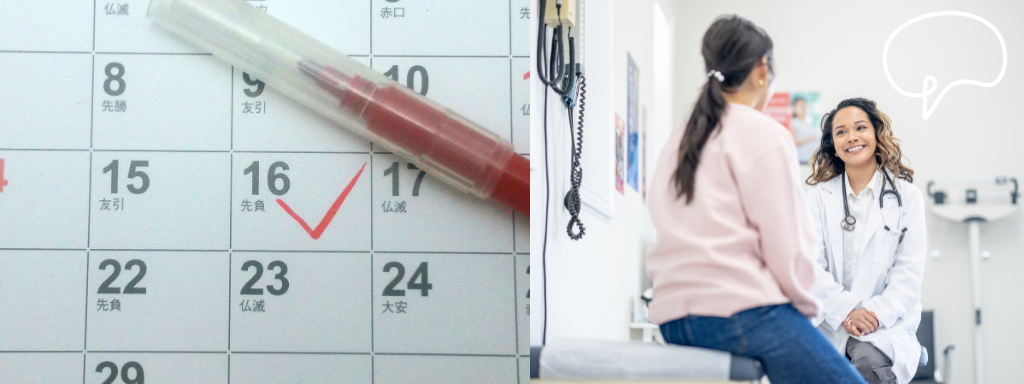
At my 6-week check, I don’t remember the doctor checking my stomach (he possibly did?) but I did mention the back aches and pains which seemed to be plaguing me even more than after the first pregnancy.
He referred me to the physio but warned there would be a bit of a wait. That was fine by me – even feeding at that stage was pulling at my lower back too much and sending all sorts of twinges up one side of my body.
My first physio appointment was at the hospital when I was about 3 months after giving birth and it was a complete revelation! The lady physio had a particular speciality in women’s health and, after getting me to lie down, started checking my stomach and asking me to try various exercises. I explained it was my back, not my stomach which was the problem.
That’s when the revelation came. Because I had such a large gap in my stomach muscles (you could literally fit two fists in there), it meant my core was extra, extra weak. So weak in fact that I couldn’t move from a lying down position to sitting up without help or pushing my hands into the bed. Even then, it felt like a huge effort. All the back pain and twinges were a result of this weak core. So my back muscles were doing the job of my stomach muscles in helping me sit, walk and carry. No wonder they were sore!
Physio For Abdominal Separation

The physio gave me various exercises to do. But these were much more specific than the ones from the first time around. There were a lot of ‘gentle’ Pilates-style exercises involved, like making a bridge and lifting your bottom off the floor. But with the added challenge of wrapping a scarf or band around my waist and pulling the two ends across one another as I did the exercises. I was literally pulling my stomach muscles back together!
She also gave me a stretchy band to wear at all times around my waist to keep my stomach pushed more together and give it extra support (a bit like a pregnancy band) and even after 6 months I was still wearing this when I did exercise. Otherwise, the jolting could start to push the muscles back apart, undoing all my hard work.
Postnatal Pilates – A New Daily Routine

Off the back of this, I signed up for postnatal Pilates. Again, with an instructor who is passionate about pregnancy and postnatal health. She took extra care to adjust the exercises even more for me. I learnt that crunches and curl-ups at that stage were an absolute ‘no’ as they could push the muscles further apart. But exercises like cat/cow, side planks and bridges were fine. She’d even check my abdominal separation to see if it was improving,
After a bit of a slow start where I would ‘forget’ to do the exercises twice a day, I had a wake-up call when the physio said at a follow-up appointment that the muscles wouldn’t come back together on their own. I fit the exercise into my daily routine last thing in the evening before going to bed and first thing in the morning after waking up. Hurrah! My stomach muscles started to come back together! The physio said it was ‘amazing’ that I’d managed to get them back to 4, then 3cm, then finally around 1cm. I probably had about 10 appointments in all, every couple of weeks, then once monthly.
There’s no doubt the scarf and all that pulling together helped. I could feel the muscles responding and beginning to ache.
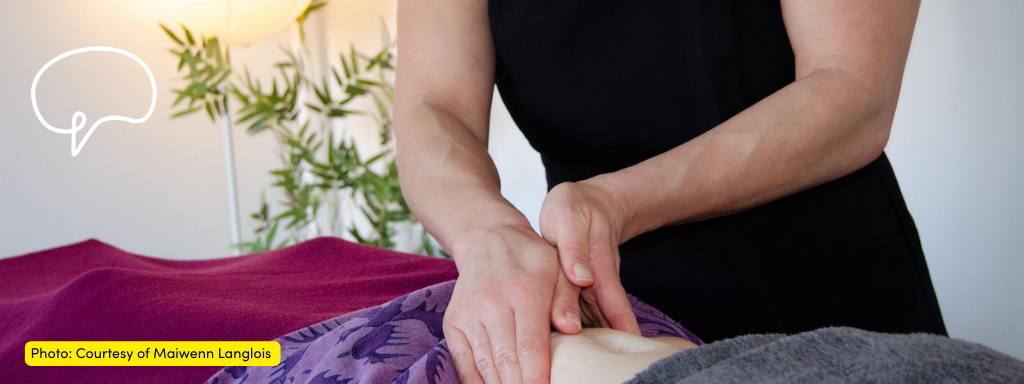
Top Tip:
If you think you have abdominal separation and haven’t been checked out, see what happens if you poke a finger into your stomach. Is it pushed back by muscles or does it feel like a piece of dough? You can also use your hands to pull out from your ribs and towards your belly button. If your muscles aren’t together, you may feel a dull ache where you’re beginning to coax them back towards the centre. It can literally feel like you’re raking them back together!
A Spanner In The Works (On A Global Scale)
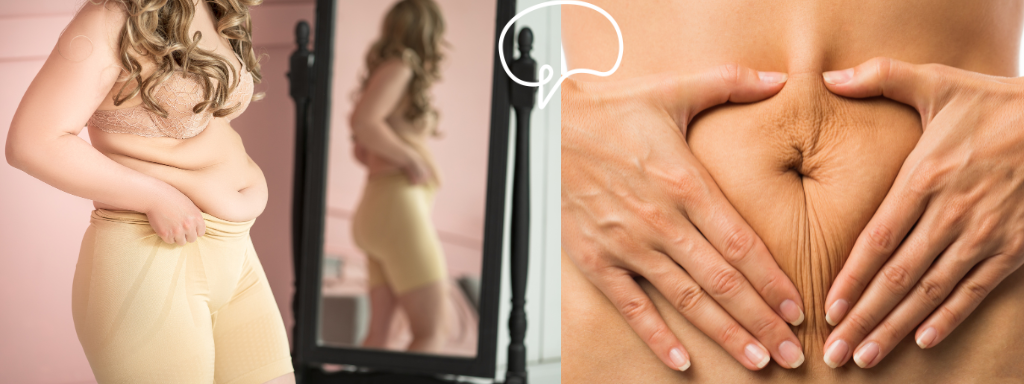
Then Covid hit, my Pilates classes went online and my stomach muscles started to separate again. I think not being in the studio and being in a more restricted space at home meant if I did something wrong, I wasn’t always self-correcting. Plus I was doing a lot of lifting and carrying of the children who were also at home all the time. On a couple of occasions, I could feel the strain on my muscles. I would think, “oops, that felt like I pulled it”.
In retrospect, I should have started the scarf-pulling exercises again. But what with our ‘one outing a day for exercise’ and working from home and looking after the children, I let it slide a lot more often. This probably continued on and off for most of the lockdown and in the following months of restrictions.
After about a year of feeling that even walking was pulling my muscles the wrong way on the school run, I decided I needed to take action. It felt like I was walking from the stomach, but not in a good way. Like I wasn’t drawing power from my core but was almost using the two sides of my stomach separately like two hinges/an open cage. And in some photos, I swear I look almost pregnant again as my stomach is bulging out more than it was before. It’s really hard to explain but it felt like a square, open cage with a gap in the middle.
What I did next was to seek help from a chiropractor on a free ‘check our posture’ session at the local leisure centre. They confirmed yes, there was a 3cm gap. That the lack of energy and back pain was again due to a weak core.
Chiropractic Care

This time I paid for some chiropractic care and back adjustments privately. I’m aware this may not be an option for many people. If it isn’t, maybe check out your work or any health insurance you have, or speak to your GP for a referral. I just wanted to get it sorted as quickly as possible. On their recommendation, I also signed up for Pilates in person again. This time Reformer Pilates, which adds a bit of weight-bearing load to the exercises.
The Results
The results have been slower this time round, but it has been worth it. At the time of writing, I’m back to about a 1cm gap just above my tummy button. But the muscles are totally back together below there. It’s a bit like a zip coming back together, with a slight bulge halfway up where it won’t quite meet. I’d love to get them fully back together, but I’m aware they might never fully close. However, I can maintain where I am now and it hasn’t stopped me from doing all the activities I enjoy. I can still do exercise like running, cycling and walking. I can feel there’s more power and energy in my body now. My muscles are pretty much working as they should be. It feels like the strength is coming from my core and not being compensated for by my back.
And that’s all thanks to the excellent (and combined) advice and exercises I received from all the health professionals including the NHS Physio, Pilates instructors and chiropractor.
My stomach still feels a bit wobbly ‘on top’ in places. But I’m assured that it is the superficial muscles on top, rather than the deep core muscles underneath, which I can feel are solid when I press into my stomach with a finger. And hopefully, with exercise, the superficial muscles will begin to get more and more toned.
My Advice?

If you suspect you have abdominal separation, then definitely get it checked out. Ask your GP or use any health insurance you have. It will take some work to close the gap but there is a ‘window of opportunity’ in those postpartum months and years to really work hard and get them back together as close as you can. Definitely, if our separation is more than 2cm, you will have to actively work and do exercises.
Some areas offer Mummy MOTS where they will check everything out in your body following birth, including cesarean scars, scar tissue and abdominal separation. These typically cost around £75-£120.
What Next?
I’m now regularly doing 5k runs and have signed up for a couple of 10K runs with friends in the autumn. Five years ago, I would barely have been able to walk 5K at a reasonable pace, let alone run it. The chiropractor says I may always have 1cm somewhere that isn’t fully closed, but if I keep doing Pilates, running and other exercises (like the Superhero stretch), I should be able to maintain my current level of fitness.
I’m also able to cycle regularly and my back pain is usually minimal!
Want To Get Out And About, Have Fun With Your Baby Or Toddler, And Meet Other Parents?
Search Happity to find everything that’s happening for the under-5s in your local area – from music and singing classes, to messy play, arts and crafts, baby massage, gymnastics and more. Simply enter your postcode and child’s age to search, and then book your spot in a few taps. Enjoy dedicated fun time with your little one, watch their skills develop, and make friends at the same time. Mums, dads, grandparents and carers will all find something to love!
If You Found This Post Useful, You May Also Like:
5 Mindfulness Activities In Nature For You And Your Family
11 Easy Tips For Getting Your Children Involved In the Kitchen

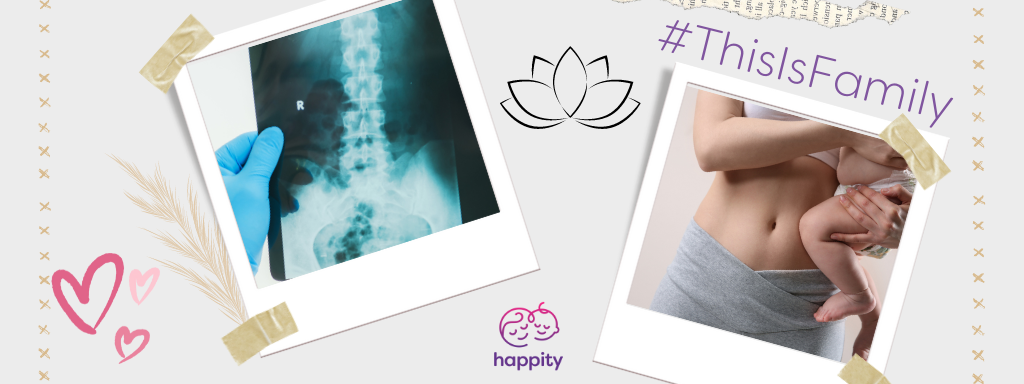

0 Comments